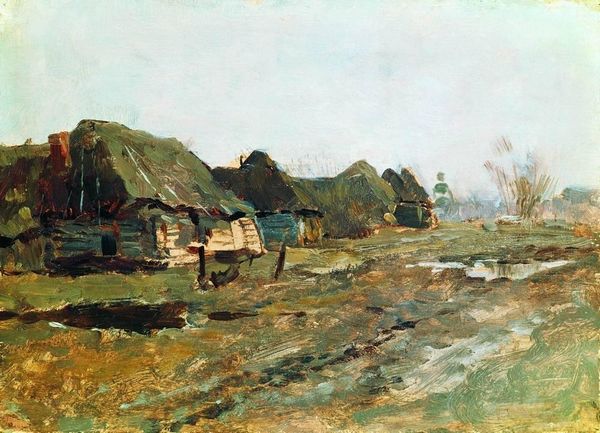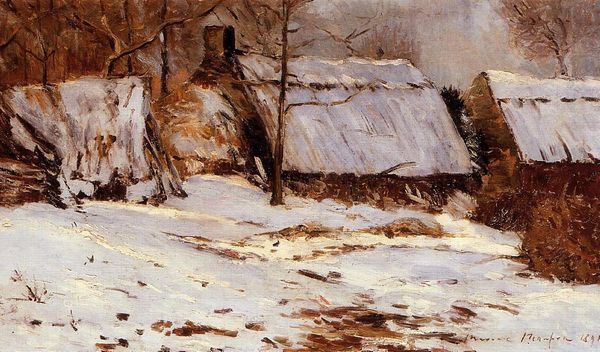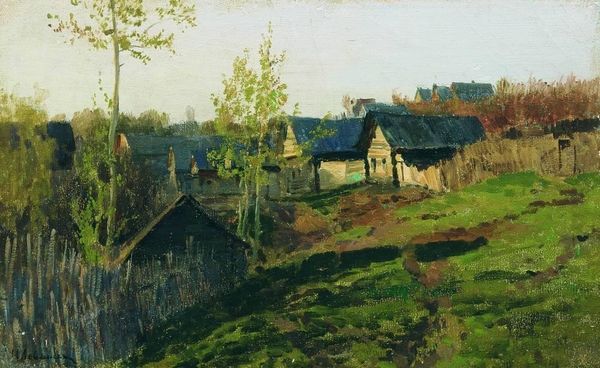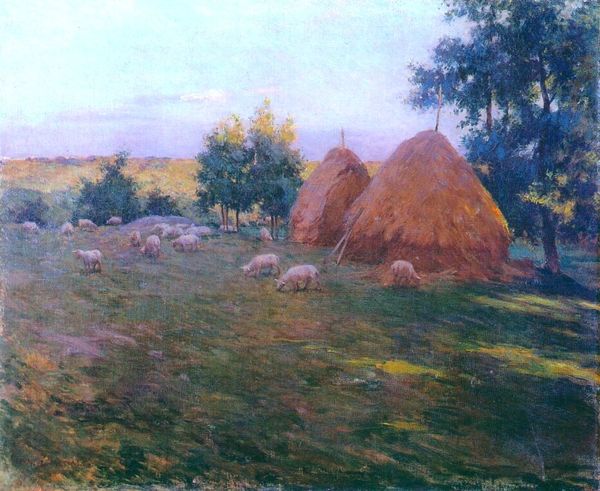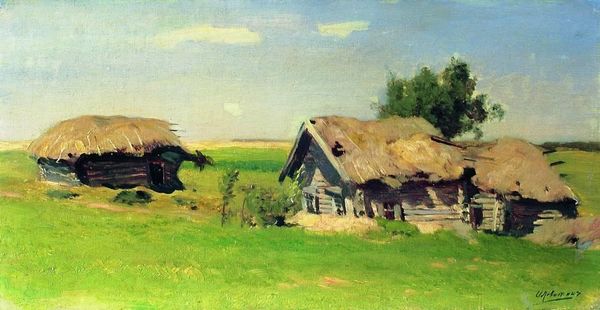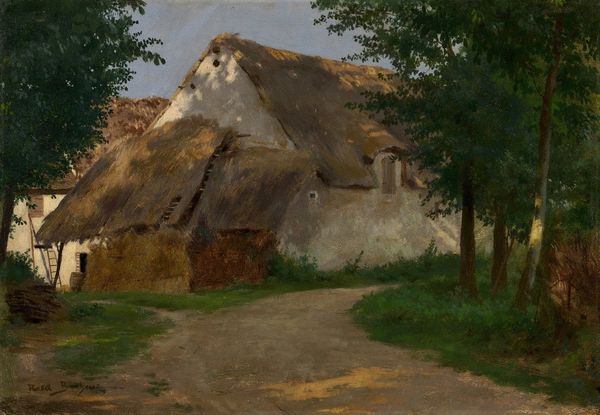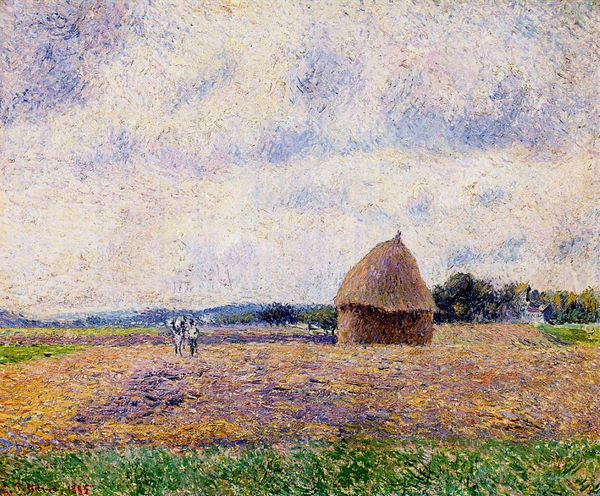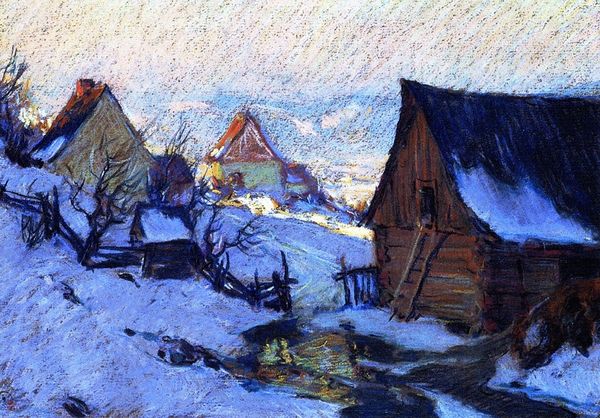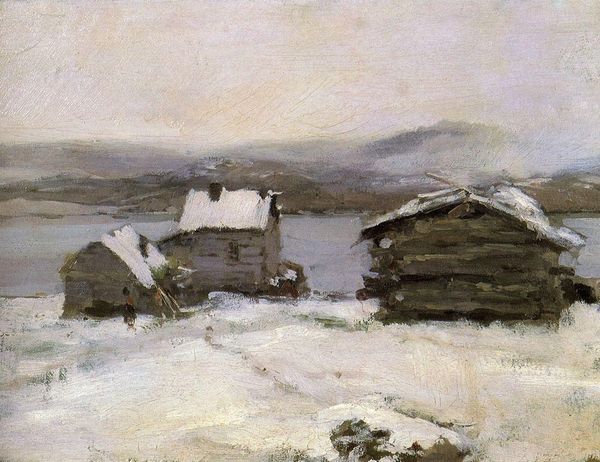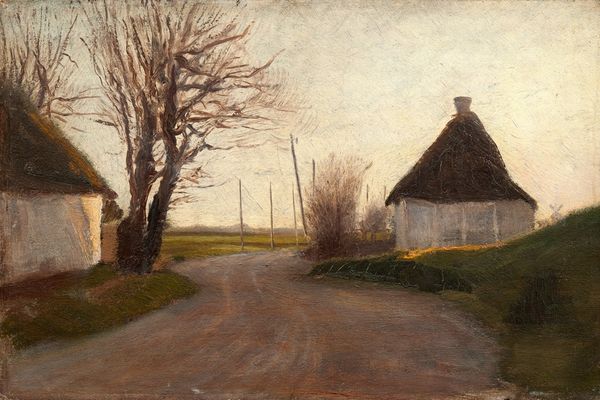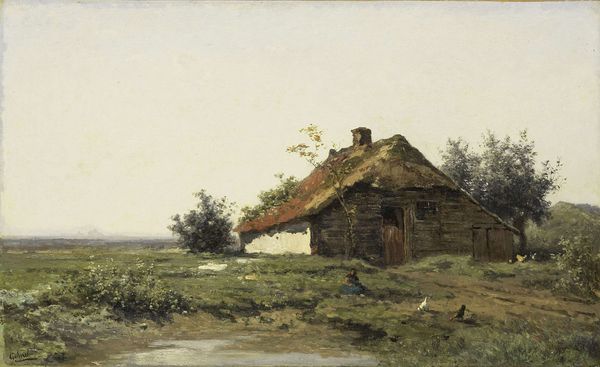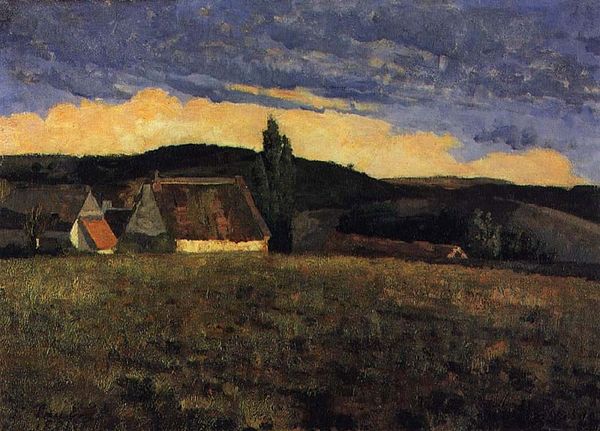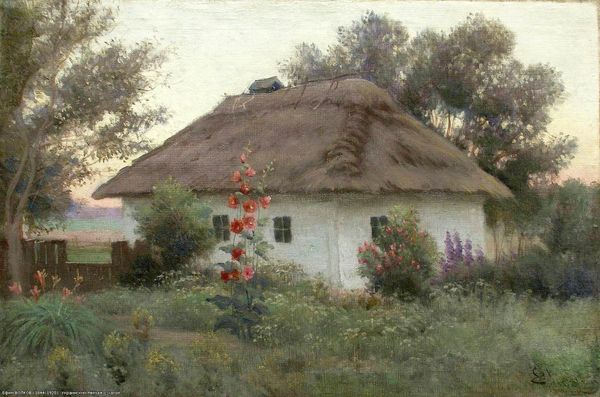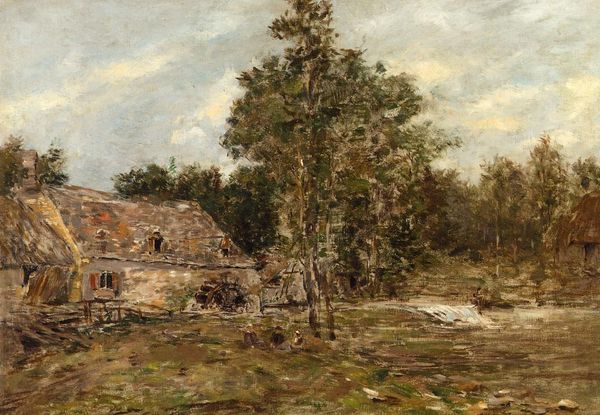
Copyright: Public domain
Editor: So, this is "Early Spring" by Isaac Levitan, painted in 1892, using oil paints. It feels quite melancholy, and the composition is rather simple with those humble rural structures… What do you see in this piece? Curator: Levitan masterfully captures the poignant, in-between moment of early spring. The painting is pregnant with anticipation, yet it whispers of dormancy. The thatched roofs evoke a timeless connection to the land. Notice the composition itself, how the low horizon emphasizes the vastness of the Russian landscape. What does that vastness suggest to you? Editor: Maybe a sense of solitude? It definitely evokes a strong feeling of quiet, rural life. Curator: Precisely. This stillness also suggests a cultural memory – a connection to the deep-rooted traditions of the Russian peasantry. The lingering snow, a symbol of winter's grip, is contrasted by the subtle awakening hinted at in the bare trees. These trees, almost skeletal, act as conduits, connecting earth and sky, hinting at both mortality and spiritual aspiration. Can you see any symbolic representation of death and rebirth? Editor: Now that you mention it, yes! The bare trees represent death and the hope that with spring they are reborn, just like nature and life in general. Curator: Levitan wasn't merely painting a landscape; he was imbuing it with a symbolic weight, resonating with themes of hope and the enduring spirit of a nation rooted in its natural environment. Editor: I hadn’t really considered the layers of symbolism, seeing the landscape as a symbol in itself that way, thank you! Curator: And thank you! Considering the cultural symbols embedded here encourages a richer dialogue with art.
Comments
No comments
Be the first to comment and join the conversation on the ultimate creative platform.
